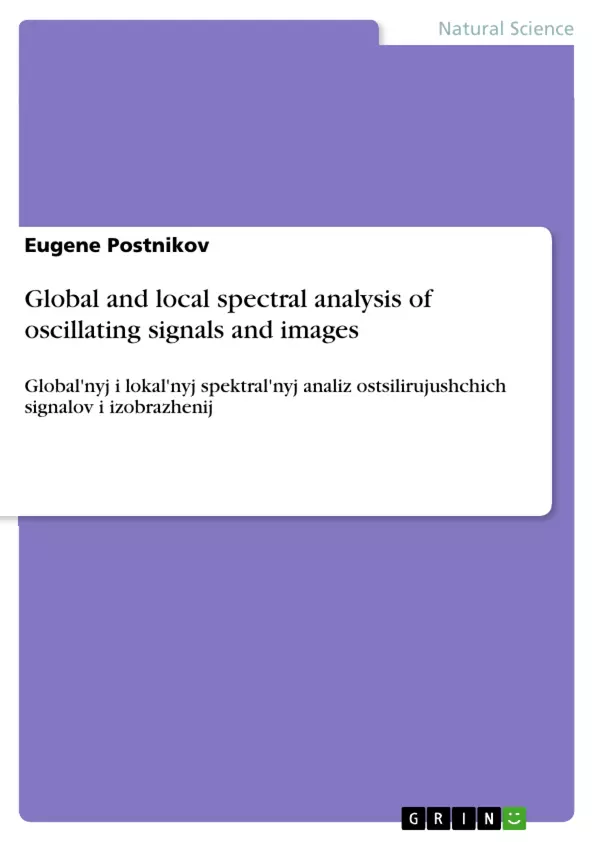This textbook presents the basics of the Fourier, the Gabor and the continuous wavelet analysis with the Morlet wavelet. The course started from the theoretical derivation based on the averaging approach, which is close connected with corresponding methods in the theory of dynamical systems. Thus, the introductory Chapter 1 is supplied with the examples illustrating analogies between the considered signal processing and the analytical approximations for ODE solutions. Chapter 2 explores the representation of the continuous wavelet transform with the Morlet wavelet as a solution of partial differential equations. Chapter 3 contains the practical recipes for MATLAB’s code realizing the described algorithms and the examples of their implementations.
Учебное пособие представляет основы преобразований Фурье, Габора и непрерывного вейвлет-преобразования с вейвлетом Морле. Курс начинается с теоретического вывода, основанного на подходе усреднения, который тесно связан с соответствующими методами в теории динамических систем. Таким образом, вводная Глава 1 сопровождается примерами, иллюстрирующими аналогии обработки сигналов и аналитических аппроксимаций для решений ОДУ. Глава 2 исследует представление непрерывного вейвлет-преобразования с вейвлетом Морле как решения дифференциальных уравнений в частных производных. Глава 3 содержит практические рецепты программного кода для MATLAB, реализующего описанные алгоритмы, и примеры их применения.
Frequently asked questions
What is the "Language Preview" document about?
The document appears to be a language preview for an academic text, containing a table of contents, objectives, key themes, chapter summaries, and keywords. It seems to delve into mathematical concepts related to Fourier analysis, wavelets, and signal processing.
What topics are covered in Chapter 1?
Chapter 1 seems to cover foundational concepts such as periodic functions, trigonometric functions (sine, cosine), complex exponentials, and Taylor series expansions. Specific topics include the properties of sin(t) and cos(t), relationships involving exp(it), and Taylor expansions for functions. A significant portion appears to focus on defining and applying these mathematical tools.
What topics are covered in Chapter 2?
Chapter 2 appears to delve into Fourier series analysis, potentially exploring complex Fourier series representations, trigonometric Fourier series, and properties associated with even and odd functions. A notable area likely covered concerns the practical application and computation of these series.
What topics are covered in Chapter 3?
Chapter 3 seems to cover numerical implementations and practical applications within -oriented software like MATLAB. Key topics here include the Fast Fourier Transform (FFT), signal processing techniques, and wavelet analysis. Much discussion seems to be about algorithms and how to perform related calculations numerically.
What are some of the key concepts and keywords used throughout this "Language Preview" document?
Key concepts and keywords appearing throughout include Fourier analysis, Fast Fourier Transform (FFT), wavelets, periodic functions, trigonometric functions (sine, cosine), complex exponentials, Taylor series, Hilbert transform, averaging, Gabor and Morlet wavelets, signal processing, pdepe, MATLAB, interpolation, spectral analysis, "master equation," and "Gibbs phenomenon." There also seem to be variables such as: a,b,t,it,N,C. These may not be key words but appear frequently in the snippets that make up the current analysis.
What practical techniques are mentioned?
Techniques include using MATLAB's fft, fftshift, fft2, ifft, ifft2, interp1q, interp2, trapz, linspace, and meshgrid functions. Specific signal processing techniques include wavelet transforms, Gaussian filtering (using fspecial), and convolution (using imfilter with the 'conv' option).
What are the key equations explored?
Key equations presented involve trigonometric identities (sin^2(t) + cos^2(t) = 1), the complex exponential formula (exp(it) = cos(t) + i sin(t)), Taylor series expansions, Fourier series representations (both complex and trigonometric forms), a kernel function K(Ω, t), and a differential equation related to perturbation analysis.
What is the purpose of the graphics in the language preview?
Based on the values that can be gleaned from the language preview, the graphics contain numerical examples of some of the functions from the text. Also included is some indication of functions showing a "gibbs" phenomena which may occur during the calculation of fourier expansions.
- Quote paper
- Dr. Eugene Postnikov (Author), 2014, Global and local spectral analysis of oscillating signals and images, Munich, GRIN Verlag, https://www.grin.com/document/281539



